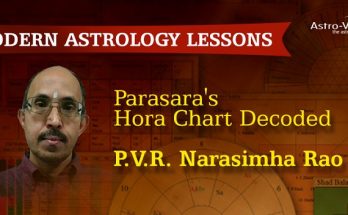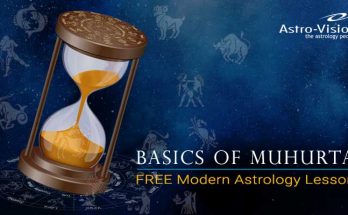Warlike situations occur, every now and then, in different parts of the world. Those suffering from war-phobia are forever anxious to know when the much dreaded Third world war is likely to break out. Any assurance that it may not take place at all in the near future may not put their anxiety to rest. Their next question would be: Will there be any Yuddha in the near future between India and Pakistan or China?
Perhaps, for such war-obsessed people, it may be comforting to know that it is not only nations which fight amongst themselves but also planets. When that happens, it is called Graha Yuddha.
When there is such a fight between two planets one will emerge as a victor. Though in general, most astrologers do not ascribe much importance to this phenomenon. Prasna Marga advices us to give importance to planetary war as well while trying to draw results.
Graha Yuddha has nothing to do with war but is only a peculiar astronomical phenomenon. Occasionally when two planets are in conjunction and the distance between them becomes less than a degree, it is called Graha Yuddha in astrological parlance. A special point to be noted is that the Sun and the Moon, the luminaries, do not get involved in such fights as also Rahu and Ketu, the Tamo Grahas. Only the five Tara Grahas, (non-luminaries) Mercury, Mars, Venus, Jupiter and Saturn can enter into such fights.
The ancient astrological treatises ascribe a range of results for such an occurrence and felt that the close conjunction of any two celestial bodies, other than the luminaries, could affect their luster, splendor and efficacy. Their natural inference was that such situations could harm the humans and nations. These mutual dispositions between the planets are considered for calculating Chestabala. In natal horoscopy, the defeated planet in this war, will be incapable of producing any beneficial results. In other words it can become rather inauspicious.
Graha Yuddha occurs when two Tara Grahas have the same longitude but their latitudes need not be the same. However, the planet, which lies to the north of the other will always emerge the victor. According to Paulisa, the condition gets reversed for Venus. Venus becomes victorious when on the southern side of the other planet.
Graha Yuddha can take place at least in three ways.
I) both the planets involved can be on the northern side of the ecliptic or with north latitudes. In such a situation the planet with greater latitude will become the winner.
II) Both can be on the southern side of the ecliptic or with having southern latitudes. Then the planet having the less southern latitude becomes the winner. In other words the planet that is posited more towards the north, with reference to the other, will always be the winner.
III) One of the planets can be on the northern side, with north latitude and the other on the southern side with south latitude. In such cases, the planet that goes to the north side will win.
Sripati Paddhati after discussing the calculation of Ayanabala of the planets digresses to mention how the planetary war modifies the normal calculation of the strength of the planets making the winner gain in strength by a specified quantum and the defeated one lose that much. This portion is determined by dividing the difference of their originally calculated strength by the difference of their latitudes. In other words the defeated planet loses a portion of its originally calculated strength, because of its defeat in the fight. Declination of the planets has no say in this. What matters is only the latitude of the planets.
Brihat Samhita deals with Grahabhakti Yoga and Graha Yuddha, which can be of interest in mundane astrology. When a planet is defeated in the Yuddha, it means only that it becomes incapable of bestowing any benefic effects or capable of inflicting serious harm. This Yuddha can prolong for a period of minimum of a day, or if a slow moving planet is involved, it can even extend up to a month or two.
Astronomically, planets have two coordinates to locate their position, namely, the longitude and latitude. The longitude of any planet is measured along the ecliptic. The latitude is the distance of the planet from the ecliptic. It can be either to the north or to the south of it. It may be noted that for astrological predictions, the latitude of any planet is rarely employed.
Situations of close proximity between any planet and the Sun also occur frequently. Then the Sun and the concerned planet will be in the same longitude. It is called combustion or astangatha. The planet in combustion will become powerless under the great luminosity of the Sun. But while dealing with Mercury it should be kept in mind that, even combust Mercury can give auspicious results with reference to education. Similarly a combust Venus can produce great saints, subject to other specific conditions.
On the other hand when the Moon and any planet get the same longitude, such a situation is called Samagama. The latitudes of the concerned celestial bodies need not be the same. A conjunction of any planet with the Moon is a source of strength. The conjunction with Rahu or Ketu for all the planets, including the Sun and the Moon, is deemed an affliction. However, when their latitudes also become the same, the Moon will hide the planet’s disc and this astronomical phenomenon is called occultation.
Brihat Samhita states that there are four types of planetary war, namely, Bheda, Ullekha, Amsumardana and Apasavya.
Due to proximity of planetary longitude,
Four types of planetary war are possible – Bheda, Ullekha, Amsumardana and Apasavya. This is clearly mentioned by ancient sages like Parasara.
Now let us try to understand these four types of planetary war.
Bheda • When two planets appear to have the same direction of movement on account of overlapping, they fight in Bheda (occultation). In this case the planet nearer to us on earth completely obstructs the farther one. This is also known by the name Chadanam (occultation).
Ullekha • When the rims of two planetary paths touch each other but do not overlap, it is called Ullekha. In other words, when the graha- bimbas (discs) of planets seem to touch each other (sparsha) it is Ullekha and is also known by the name Rodhanam (obstruction).
Amsumardana • When the rays of the two planets appear to clash each other, it is termed Amsumardana. Another name for this kind of planetary war is Kirana sanghatana (clash or rays) and yet another name is Rasmi-mardana (clash of rays)
Apasavya • When a planet’s disc, covering the other moves south (in the opposite direction, in retrograde motion), Apasavya occurs also known as Aasavya.
Such detailed classification is especially useful in mundane astrology more than in natal horoscopy. Brihat Samhita says that when a Bheda (occultation) type of warfare takes place there will be failure of rains and discord amongst friends and big families or kings will have problems as it can cause clashes between large tribes (mahakulas) and presumably affect prominent citizens. When Ullekha (grazing) type of war occurs, there can be danger from clashes (implying wars or civil disturbances), and ministers will be at loggerheads with themselves and with the king (a prime minister or the President). There can be food scarcity or a famine like situation. Amsumardana (clashing of rays) can create wars amongst nations and people may suffer from disease and poverty. With Apasavya there will be fights between the ruling classes (within or the country or outside) and it can create warlike situations.
Of the about fifty-one types of Yuddhas mentioned in the texts, the three prominent ones are Bheda, Ullekha and Amsumardhana. Definitions differ for the other two, Apasavya and Yuddham. Apasavyam in planetary war is Asavyam yuddham and some define it as a situation of nearness that arises when one of the planets has direct motion and the other, retrograde. Some take the Yuddham as a situation that arises when the planets are within a degree. They reckon the Graha Yuddha as soon as the planets come close to each other within five degrees or less.
All these detailed classifications, can come under a simplified rule. If any two planets (other than the luminaries and Nodes) are within one degree of each other, they can be deemed to be in Graha Yuddha.
Then, can one find out from the planetary positions in a chart, whether a Graha Yuddha is over or due to happen?
When two planets are in the same Rasi and if one planet has more longitude than the other slow-moving planet, then we can assume that the Yutikala (same longitude) has ended or the. planetary war is already over.
If the slow moving planet has more longitude than the fast moving planet then we can assume that the Yutikala (same longitude) is yet to happen or the planetary war yet to take place. For this one must understand the different planetary velocities. The Moon is the fastest of the lot. Then comes Mercury followed by Venus, the Sun, Mars, Jupiter and Saturn which is the slowest.
It is clear that the general effects caused by such planetary wars have to be declared as ordained with the ruler-ships of the concerned planets while adjudging nativities. The inference is that the more a planet is stricken, the greater will be its tendency to harm. So while considering the various Yogas caused by planets, it must be remembered that the prominent planet causing Yoga, if it gets defeated in Graha Yuddha can not only fail to bring the good effects of the Yoga but also can even become ominous. This factor can also be deemed to affect the Dasa results, even though explicit assertions in texts are conspicuous by their absence.
Venus declared victor with southern declination by the special rule becomes victor with a northern declination also, in the general rule, with the result that it becomes the victor always. The determination of the victor based on the greater orb of the planet involved in the fight can make it the winner even if it has southern latitude. Methods to decide the victor, when the two planets get identical latitudes or when three or more get into the fray, are conspicuous by their absence. Such points require deep study and research. •
Courtesy: MODERN ASTROLOGY (Author:V. S. Kalyanaraman )










What is remedy of guru shukra planetary war in meena lagna in Sagittarius sign. In which shukra is win.